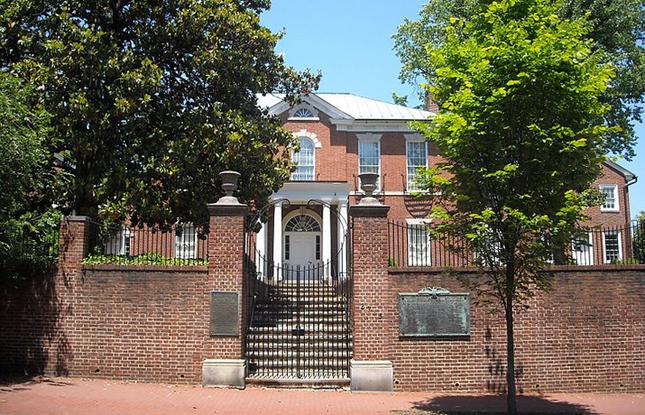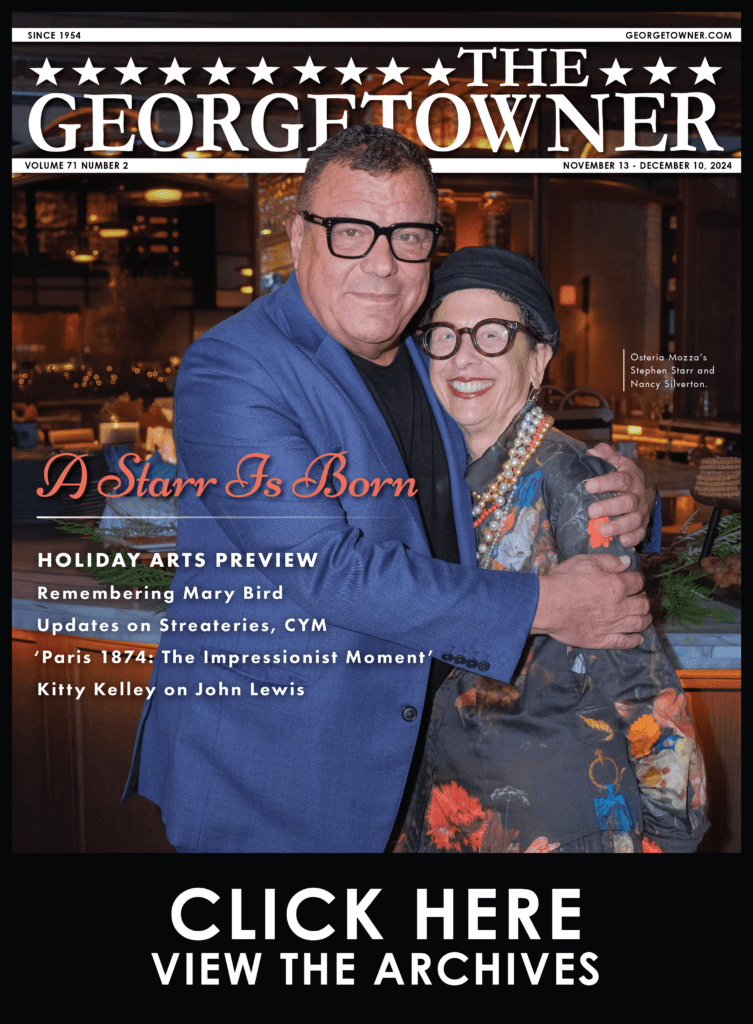Dumbarton House, located at 2715 Q St., NW, gets its name from landowner Ninian Beall. He named the surrounding land after “Rock of Dumbarton,” a prominent geological feature near Glasgow in his native Scotland in 1703, 48 years before the town of Georgetown was chartered by the Maryland Legislature.
Since Beall was granted the property, it was bought and sold by various owners until a Philadelphia merchant named Samuel Jackson built a large two-story brick home on the property in 1799. Just before the nation’s capital moved from Philadelphia to D.C., Jackson mortgaged the estate.
Five years later, the U.S. acquired the mortgage and sold the land with the brick home at public auction. It was purchased by Joseph Nourse, the first Register of the U.S. Treasury, for $8,581.67 as a home for his family. In 1813, Nourse sold the property to Charles Carroll, cousin of the signer of the Declaration of Independence, who renamed it Bellevue after his former plantation near Hagerstown, Md. On Aug. 24, 1814, after living on the estate for just a year, Carroll was asked by President James Madison to escort first lady Dolley Madison out of the White House to safety as British troops advanced on Washington. Carroll fled with the first lady, along with the wife of the Secretary of the Navy, Eleanor Jones, to Bellevue before meeting the president in Virginia.
In 1815, Carroll vacated his Georgetown home and left it to be occupied by a succession of tenants for decades. Thirteen years before the National Society of the Colonial Dames of America bought the property in 1928, the historic home was moved 100 feet north. It was originally located in the middle of today’s Q Street, but with the construction of the Dumbarton Bridge, continuing Q Street from downtown to Georgetown, it was moved out of the way in 1915 to its present site in order to avoid demolition.
Alterations were made to the property during the late 19th and early 20th centuries by various owners. In order to return the home to the simplicity and style of its original design, the NSCDA spent several years executing restoration projects, beginning in 1931, under the direction of architect Horace Peaslee and renowned architectural historian and museum director Fiske Kimball. Restorations included removing the Georgian quoins and balustrades and expanding the window openings to their original size and altering the roofline. The mantels in the home were not originals and were subsequently replaced by ones reflecting the popular style of the Federal period. Historical and architectural research continues to this day to ensure the highest degree of accuracy in restoring Dumbarton House back to its original Federal character.
In 1932, the property was renamed back to the familiar Dumbarton House and was declared a Federal-period historic house and museum by the NSCDA, which then opened it to the public.


